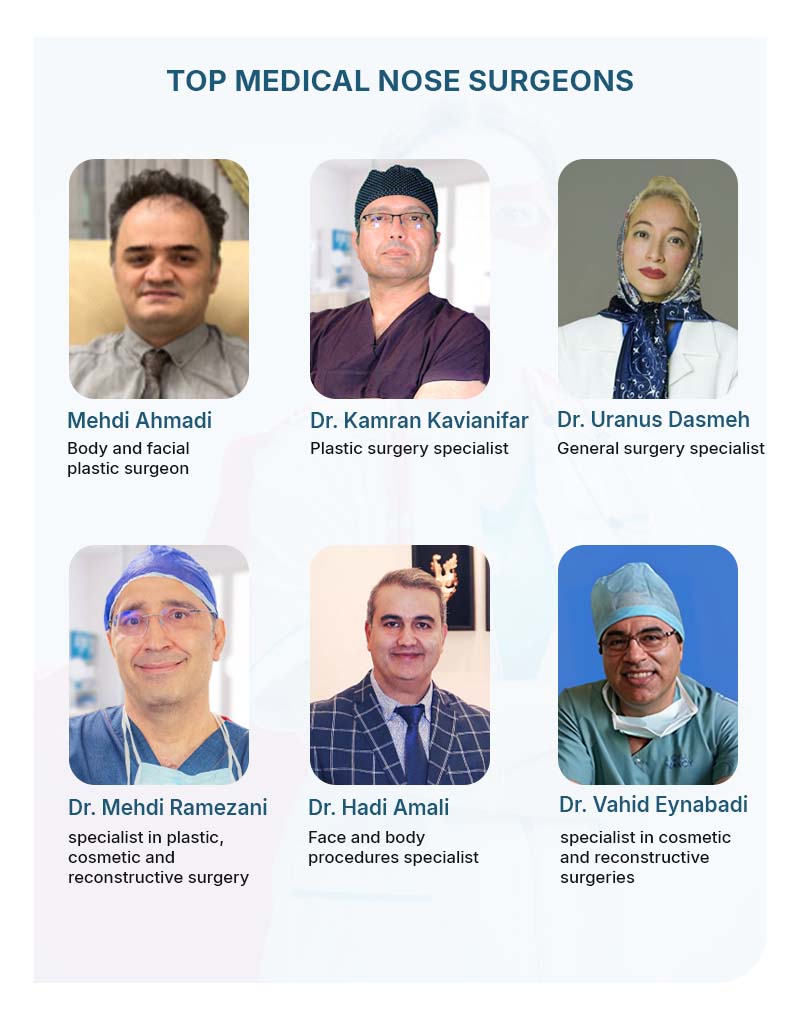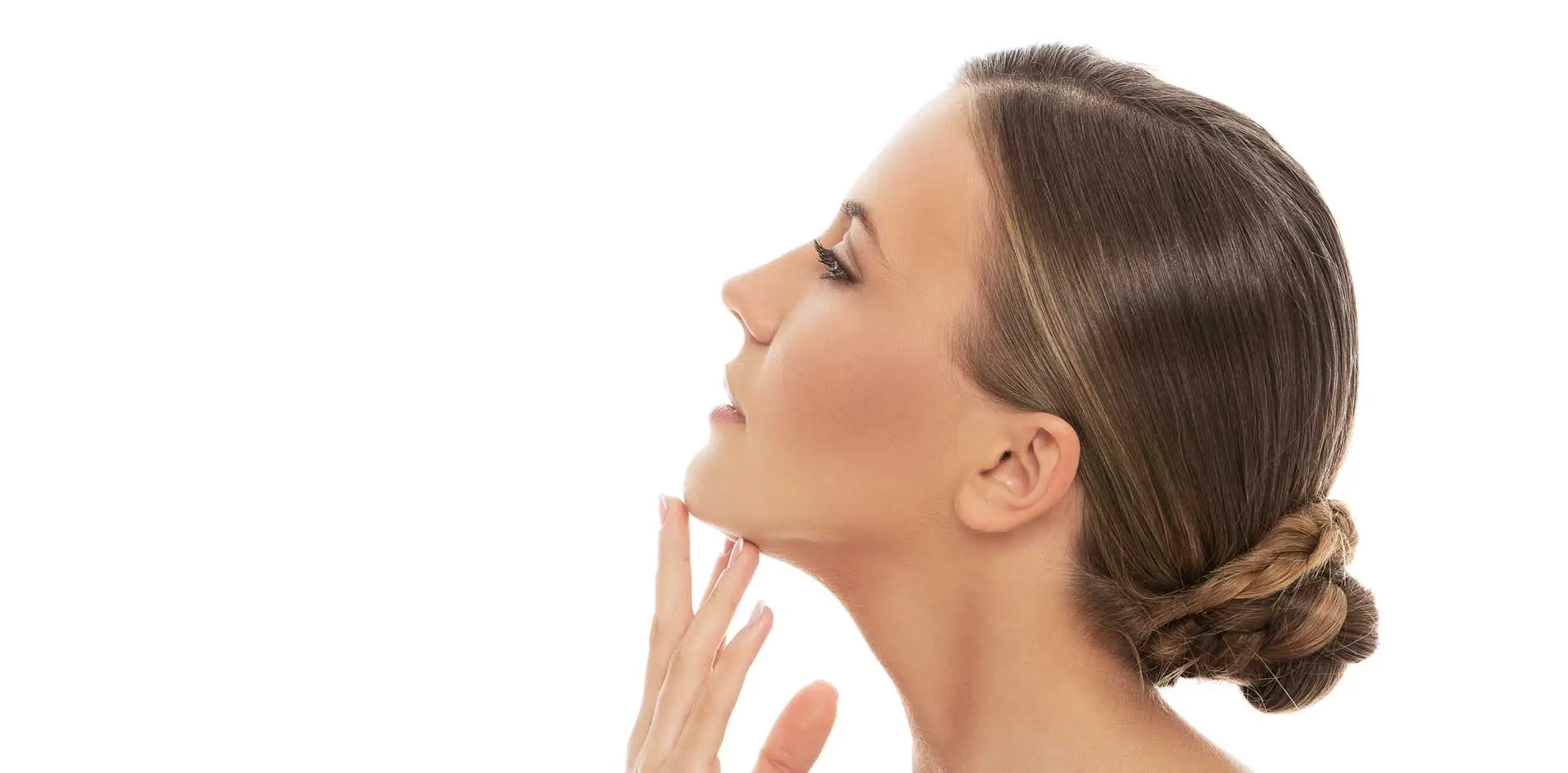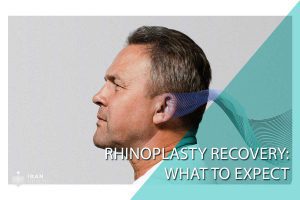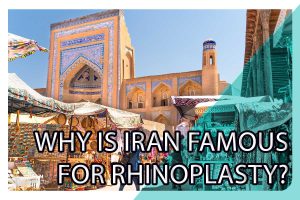Nose Shapes that Can Be Corrected with Rhinoplasty
Knowing the shape and form of your nose is crucial for planning for a successful rhinoplasty surgery. As a distinctive characteristic of your face, your nose is important in determining facial harmony.
There are many kinds and forms of noses, so knowing yours will help you decide how to proceed with your rhinoplasty surgery in Iran :
- Shaving Down a Hump
A hump in the nose is one of the most common reasons you may want to undergo rhinoplasty. Humps usually happen on the ridge of your nose, and these humps are the result of an injury or genetics.
- Fixing a Pinched Nose
A pinched nose usually refers to a nose that is squeezed or pinched near the tip. Some people may be born with a pinched nose, but more frequently, this results from an earlier botched nose job when too much cartilage has been removed to create a slimmer nose shape.
- Correcting a Boxy Tip
A boxy nasal tip happens when the cartilage at the bottom of your nose is squared off or rectangular, giving the nose a boxy shape.
- Minimizing a Bulbous Tip
A bulbous tip is very similar to a boxy tip in many ways. Many patients describe their boxy tip as a bulbous tip and vice versa.
Learn more about treatable nose shapes with rhinoplasty: Type of rhinoplasty: All you need to know about them!
Aim for Natural Results
While rhinoplasty may significantly improve the appearance of your nose, the finest nose jobs preserve natural proportions and seem better in every aspect. For example, the upper nasal bridge may be straightened or shortened without going overboard; this will help the outcome appear natural without making your nose appear too large.
Maintain Balance Between Facial Features
Like any form of facial plastic surgery, rhinoplasty’s results must be harmonious with the rest of your facial features. This is why your surgeon will evaluate your eyes, cheeks, brows, chin, and overall facial shape and structure before discussing your new nose shape.
Consider Your Genetic and Ethnic Background
For example, your ethnicity can influence your eye color, hair texture, and skin tone, and it can also affect your nose. Your ideal nose should preserve the qualities of your ethnic background.
Evaluate Your Profile
After rhinoplasty, your resulting facial profile should be as impressive as your appearance from the front. The best nose shape should look good from all angles.
Find Inspiration
If you’re considering getting cosmetic surgery on your nose, taking a bunch of pics of noses you like can help you show the surgeon what you’re looking for. It’s a good idea if you have trouble explaining exactly what you want. Doing this can seriously increase your chances of coming out of surgery with the nose you’ve always wanted.
Look Over Before-and-After Photos
Do your homework. Take your time looking at the before-and-after pictures of rhinoplasty taken by your surgeon. Seeing a patient with similar features to your own can help you visualize how you will appear following facial plastic surgery.
disclaimer:
this guide includes general advice, for professional medical advice please contact us to talk with doctor directly.
The Rhinoplasty Reality Check: What to Expect from Your Journey
Rhinoplasty is a surgery that requires you to understand what is feasible and what is not. Below, we’ll examine what you can reasonably expect from the procedure.
Rhinoplasty Expectations: What’s Realistic and What’s Not
| Expectation |
Realistic or Not? |
Why |
| A perfect, flawless nose | YES / NO | Rhinoplasty can improve the appearance of your nose, but it’s unlikely to achieve perfection. |
| A nose that looks exactly like a celebrity’s | YES / NO | Rhinoplasty is tailored to your features and goals, not a copycat procedure. |
| Complete elimination of breathing problems | YES / NO | Rhinoplasty can improve breathing, but it may not eliminate all issues. |
| A solution to all self-esteem issues | YES / NO | Rhinoplasty can boost confidence, but it’s not a magic wand for all self-esteem concerns. |
| Improved facial harmony and natural appearance | YES / NO | Rhinoplasty can enhance your natural features and facial balance. |
| Improved breathing and nasal function | YES / NO | Rhinoplasty can improve the function of your nose, making breathing easier. |
Your Rhinoplasty Roadmap
As you prepare for your consultation, take a moment to reflect on what you want to achieve with rhinoplasty. Ask yourself:
- What are my non-negotiables?
- What are my realistic expectations?
- What are my concerns and fears?
The Power of Open Communication
Give your surgeon your roadmap at your consultation. They will better understand your expectations and ascertain whether they can be fulfilled. Question things without fear, such as:
- What can I realistically expect from rhinoplasty?
- What are the potential risks and complications?
- How will my nose look and function after surgery?
Communicating honestly with your surgeon and having reasonable expectations will help you be more ready for your rhinoplasty. Remember that you and your surgeon may achieve a successful rhinoplasty together.
Choosing the Right Surgeon
You will start a life-changing journey that calls for a reliable mentor to assist you in dealing with the challenges of rhinoplasty. Your surgeon is that guidance, and getting the results you want depends on selecting the best one.
Suppose you are currently searching for the right surgeon to perform your rhinoplasty. In that case, we highly recommend reading “Choosing the Perfect Rhinoplasty Surgeon: Top Tips“ before moving on to the next heading. It’s a valuable resource to have more complete information to help you make an informed decision and ensure you receive the best possible results from your surgery.
Below is the summarized information if you want just read the main point:
The Surgeon’s Role: More Than Just a Technician
Selecting the ideal surgeon is a personal choice that must be carefully considered. Your surgeon is a collaborator in your rhinoplasty process, an artist, a communicator, and a talented technician.
They will assist you in understanding your goals, establishing reasonable expectations, and developing a customized strategy to achieve them.
The Importance of Qualifications and Experience

In rhinoplasty, credentials, and experience count—quite a bit.
Look for a surgeon who:
- Is board-certified in otolaryngology (ENT) or plastic surgery
- Has extensive experience in rhinoplasty, with a proven track record of success
- Stays up-to-date with the latest techniques and advancements in the field
One question may arise: ENT surgeon or plastic surgeon? Which one is better for rhinoplasty? Don’t worry; we have discussed this matter in detail in the link above.
Researching and Selecting a Surgeon: A Checklist
| Checklist Item | Why It Matters |
| Board certification | Ensures the surgeon has met rigorous standards for training and expertise |
| Experience with rhinoplasty | Guarantees the surgeon has a deep understanding of the procedure and its nuances |
| Before-and-after photos | Provides visual evidence of the surgeon’s skill and attention to detail |
| Patient reviews and testimonials | Offers insight into the surgeon’s bedside manner and communication style |
| Consultation experience | It helps you gauge the surgeon’s listening skills, empathy, and willingness to answer questions |
| Facility accreditation | Ensures the surgical facility meets high standards for safety and quality |
Red Flags to Watch Out For
As you research surgeons, be cautious of:
- Unrealistic promises or guarantees
- Lack of transparency about risks and complications
- Unclear or evasive communication
- Unwillingness to show before-and-after photos or provide references
What to Expect During Your Rhinoplasty Consultation(The Consultation Process)
You’ve done your research, and now it’s time to take the next step: meeting with a surgeon to discuss your rhinoplasty goals. This consultation is a crucial part of your journey, and we’re here to guide you through what to expect.
Rhinoplasty Consultation: A Collaborative Conversation
Consider your consultation to be a cooperative discussion with your surgeon. It is a chance to discuss your expectations, worries, and aspirations and learn more about the rhinoplasty procedure.
What to Expect During Your Consultation
Here’s what you can expect during your consultation:
- A thorough discussion of your medical history and any previous nasal surgeries or injuries
- An examination of your nose, including an assessment of your nasal structure and breathing function
- A review of your goals and expectations, including what you hope to achieve with rhinoplasty
- A discussion of the different rhinoplasty techniques and options available to you
- A review of the potential risks and complications associated with rhinoplasty
- A discussion of the costs and financing options for your procedure
The Importance of Asking Questions
Your consultation is the perfect opportunity to ask questions and get answers. Don’t be afraid to ask about:
- The surgeon’s experience and qualifications
- The different types of rhinoplasty procedures and which one is right for you
- The potential risks and complications associated with rhinoplasty
- The recovery process and what to expect during the first few weeks after surgery
- The costs and financing options for your procedure
Read more: 22 questions you had about rhinoplasty but were ashamed to ask
Your Consultation Checklist
To make the most of your consultation, come prepared with:
- A list of questions and concerns
- Photos of your nose from different angles
- A clear understanding of your goals and expectations
- A willingness to listen and learn
For more information, we provide a Rhinoplasty Consultation Checklist: Must-Have Questions if you need a complete checklist.
planning for a successful rhinoplasty surgery and Simulation
You’ve decided to pursue rhinoplasty. Now, it’s time to start planning and visualizing your new nose. This crucial step helps ensure that you and your surgeon are on the same page and that you’ll love your results.
Planning and simulation are essential components of the rhinoplasty process. They allow you and your surgeon to:
- Visualize your potential results
- Discuss and refine your goals
- Identify potential challenges and develop a plan to overcome them
- Ensure that you’re comfortable with the proposed changes
Simulation Techniques: A Sneak Peek at Your New Nose
To help you see your new nose, your surgeon might employ some simulation methods and technologies. Those consist of:
| Simulation Technique | How It Works | Benefits |
| Computer Imaging | It uses digital software to manipulate your nose shape and size | Allows for precise measurements and simulations |
| 3D Modeling | Creates a three-dimensional model of your nose | Provides a highly realistic visualization of your potential results |
| Virtual Try-On | It uses augmented reality to superimpose your new nose shape onto your face | It gives you a realistic preview of your new look |
| Mirror Imaging | It uses a mirror to reflect your nose shape and size | It helps you visualize your potential results in real-time |
Read more: How do you know what your nose will look like after a rhinoplasty?
Your Simulation Session: What to Expect
During your simulation session, you can expect:
- A thorough discussion of your goals and expectations
- A review of your medical history and any previous nasal surgeries or injuries
- A simulation of your potential results using one or more of the techniques above
- A discussion of the potential risks and complications associated with rhinoplasty
- A review of the costs and financing options for your procedure
The Benefits of Simulation
Simulation offers several benefits, including:
- Increased confidence in your decision to pursue rhinoplasty
- A clearer understanding of your potential results
- A more accurate assessment of the risks and complications associated with rhinoplasty
- A stronger sense of collaboration with your surgeon
Working with your physician can create a customized rhinoplasty plan that meets your needs and objectives. Never forget, your new nose is just a simulation away.
Preparing for Your Rhinoplasty Surgery
You’re one step closer to achieving your rhinoplasty goals. Now, it’s time to focus on preparing for your surgery. This crucial step ensures a safe and successful procedure.
Sharing Your Medical History
Your medical history plays a vital role in your rhinoplasty journey. It’s essential to disclose any medical conditions, medications, or previous surgeries to your surgeon. This information helps your surgeon:
- Identify potential risks and complications
- Develop a personalized plan to minimize risks
- Ensure your safety during and after surgery
During your initial consultation, we’ll discuss your medical history in detail. This includes:
- Reviewing your medical records and any previous surgeries or illnesses
- Ordering blood tests and other necessary exams to identify potential health risks
- Evaluating any cardiological issues, which may require a pre-surgery investigation with heart exams
Pre-Operative Care: A Checklist for Rhinoplasty Success
To ensure a smooth and successful surgery, follow these pre-operative care tips:
| Pre-Operative Care Tip | Why It Matters |
| Stop smoking | Reduces risk of complications and promotes healing |
| Avoid certain medications | Minimizes risk of bleeding and interaction with anesthesia |
| Follow a healthy diet | Supports immune function and wound healing |
| Get plenty of rest | It helps reduce stress and promotes recovery |
| Arrange for post-operative care | Ensures a smooth and comfortable recovery |
Pre-Operative Exams and Tests: A Safety Net
Before your surgery, your surgeon may recommend the following pre-operative exams and tests:
| Pre-Operative Exam/Test | What It Checks |
| Blood tests | Checks for infection, blood clotting, and other health markers |
| Electrocardiogram (ECG) | Assesses heart health and function |
| Chest X-ray | Evaluate lung health and detect potential issues |
| Nasal endoscopy | Examines nasal passages and sinuses |
| Allergy testing | Identifies potential allergies to medications or materials |
Complementary Exams for Nasal Evaluation
We recommend complementary exams to evaluate your nasal function and aesthetics to ensure the best possible outcome. These may include:
| Complementary Exam | What It Evaluates |
| Nasal endoscopy with rigid or flexible optics | Nasal passages and sinuses |
| Sinus tomography | Sinus health and potential issues |
| Evaluation of nasal polyps, adenoid or turbinate hypertrophy (spongy flesh) | Breathing issues and nasal function |
Correcting Breathing Issues
If you have a deviated septum or other breathing issues, we’ll correct these during surgery to improve your nasal function.
Photographic Documentation
Before your surgery, we’ll take standard photos of your face for photographic documentation. This allows us to:
- Compare your pre- and postoperative results
- Understand your objectives and share our opinions on nose/face recovery
- Identify any technical limitations in your specific case
Anesthesiologist Evaluation
We recommend an evaluation with an anesthesiologist before your rhinoplasty surgery. This ensures you understand the differences between local anesthesia with sedation and general anesthesia and can make informed decisions about your care.
We can ensure a safe and successful rhinoplasty surgery by taking a comprehensive and personalized approach to your medical history and pre-operative care.
Your Pre-Operative Consultation: What to Expect
During your pre-operative consultation, you can expect:
- A thorough review of your medical history and any medications you’re taking
- A discussion of your pre-operative care plan
- A review of the potential risks and complications associated with rhinoplasty
- A Q&A session to address any concerns or questions you may have
Your Safety, Our Priority
Our top concern is your safety. By performing the appropriate exams and testing and adhering to these pre-operative care recommendations, we can guarantee a successful and safe operation.
I’ve written this part again in a conversational style to make the material more interesting and relevant. In addition, I have summarized pre-operative exams and testing and stressed the need to provide medical history and receive pre-operative care.
Rhinoplasty Cost Planning Table
Cost is the most critical concern for everyone considering a nose job, especially those considering rhinoplasty in another country like Iran for affordable cost; so we think you need the table below to estimate the cost of planning for a successful rhinoplasty surgery.
| Country | Average Cost of Rhinoplasty | Accommodation (7 nights) | Food and Transportation (7 days) | Total Cost |
| USA | $8,000 – $15,000 | $1,500 – $3,000 | $1,000 – $2,000 | $10,500 – $20,000 |
| Iran | $2,000 – $4,000 | $300 – $600 | $200 – $400 | $2,500 – $5,000 |
| Turkey | $3,000 – $6,000 | $500 – $1,000 | $300 – $600 | $3,800 – $7,600 |
| Mexico | $3,500 – $6,500 | $500 – $1,000 | $300 – $600 | $4,300 – $8,100 |
Additional Costs to Consider:
- Flight tickets: $500 – $1,500 (depending on the country and time of booking)
- Visa fees: $50 – $200 (depending on the country’s visa requirements)
- Consultation fees: $100 – $300 (depending on the clinic and doctor)
- Follow-up care: $500 – $1,000 (depending on the clinic and doctor)
Why Consider Iran for Rhinoplasty?
- Lower cost compared to the USA and other Western countries
- High-quality medical facilities and experienced surgeons
- Short waiting periods for surgery
- Tourist attractions and cultural experiences available during recovery
Things to Keep in Mind:
- Research and choose a reputable clinic and surgeon (here we are stepping in to ensure you never have to pay extra money for the process)
- Ensure the clinic and surgeon are accredited and licensed
- Consider the language barrier and arrange for translation services if needed
- Plan for post-operative care and follow-up appointments
- Check the country’s travel and health requirements before booking your trip
Note:
If you complete a study and speak with a medical professional, he or she can provide a more accurate estimate of the costs involved.
Glossary of rhinoplasty
This dictionary of rhinoplasty terminology covers anatomical structures, surgical methods, typical issues, and abnormalities in detail. By knowing this jargon, patients may make better decisions regarding their surgery and communicate(rhinoplasty consultation) with their doctors more effectively.
Anatomical Terms
- Alar base: The bottom of the nose, or the portion of the nose visible when looking up at a person from below.
- Columella: The strip of flesh that divides the nostrils.
- Dorsum: The bridge of the nose.
- Glabella: The point where the forehead meets the nose, between the eyebrows.
- Nasion: The bony point where the nose begins.
- Radix: The “root” of the nose.
- Rhinion: The point of transition between the nasal bones and cartilage.
- Tip complex: The lower part of the nose, including the tip and the surrounding cartilage.
Surgical Techniques
- Dorsal hump removal: Reduction of the bone and cartilage convexity along the bridge of the nose.
- Rasp: Use a sharp file to reduce the height and smooth the surface of the nasal bones.
- Osteotomy: Surgical cut in a bone, used to move the nasal bones during rhinoplasty.
- Cephalic trim: Removal of a portion of the superior and medial aspects of the lateral crus of the lower lateral cartilage, to reduce overall tip volume.
- Dome division is a technique that divides the nasal tip cartilage at the dome to shorten and/or reshape the tip.
- Lateral crural overlay: A technique involving division, overlap, and repair of the lateral crus of the lower lateral cartilage, to narrow the tip without significantly weakening its structure.
- Lateral crural strut grafts: Cartilage placed underneath the lateral crural to flatten and strengthen the sides of the tip.
- Alar rim grafts: Cartilage placed along the rim of the nostril to support the soft tissue and reduce the risk of alar retraction.
- Spreader grafts: Cartilage placed along the dorsal septum to widen the internal nasal valve region and support the sidewalls of the nose.
- Batten grafts: Cartilage placed along the nasal sidewalls to prevent collapse, commonly used in closed (endonasal) rhinoplasty.
- Flaring suture: A mattress suture is placed in the upper lateral cartilages, cantilevered on the dorsal septum, to reduce sidewall collapse with inspiration.
- Septoplasty: Alteration of the shape or structure of the nasal septum.
- Inferior turbinate reduction: Reduction of the volume of the inferior turbinates, performed to open the airway.
- Rotation: Increase in the nasolabial angle.
- Alar base modification: Changes in the shape and/or width of the base of the nose.
Problems and Deformities
- Alar retraction: Elevation of the alar rim, frequently from scar tissue and healing forces.
- Bulbous tip: Wide or full tip region.
- Columella show: Visibility of the inside of the nose on the profile view.
- Deviated septum: Deviation of the septal bone and cartilage from the midline, frequently causing nasal obstruction.
- Droopy (ptotic) tip: Tip position under-rotated or downward in orientation.
- Inverted “V” deformity: Visibility of the nasal bone edges due to poorly supported upper lateral cartilages.
- Nasal valve collapse (external): Collapse of the nostrils and alar tissues with inspiration.
- Nasal valve stenosis (internal): Tightness of the area inside the nose bounded by the septum, inferior turbinate, and upper lateral cartilage; narrowest part of the nasal airway.
- Polly beak deformity: Fullness in the area above the tip, causing the appearance of convexity.
- Saddle nose deformity: Collapse of the bridge of the nose due to failure of the internal support.
- Turbinate hypertrophy: Enlargement of the turbinate tissues, most commonly the inferior turbinates.
Approaches and Techniques
- Closed rhinoplasty: A rhinoplasty that is performed through incisions made within the nostrils, creating no visible scarring.
- External rhinoplasty: A rhinoplasty performed from the outside of the nose by making a small incision on the columella, allowing easy access to the underlying bone and cartilage structure.
- Dome binding suture: A suture technique used to define and narrow the nasal tip, creating a more sharply defined tip.
- Dorsal reduction is an approach that minimizes the need for spreader grafts in rhinoplasty patients, emphasizing the integrity of the upper lateral cartilages.
- Lateral crural strut grafts: A versatile technique for repositioning, reshaping, or reconstructing the lateral crura, enhancing the appearance of the nasal tip.
- Preservation rhinoplasty: An approach that avoids removing the top of the nasal bones and nasal cartilages, instead pulling a wedge of bone from the side of the nasal bone where it attaches to the cheek, and pushing the nasal complex down to correct the bump (dorsal hump).
- Structure rhinoplasty: An approach that aims to replace and rebuild the cartilage structure, reshaping it to be more aesthetically pleasing, often requiring an open approach and several cartilage grafts.
Schedule a Free Consultation with IranHealthAgency
If the look of your nose is negatively affecting your self-confidence, search for a board-certified plastic surgeon specializing in rhinoplasty. If you live in… (No matter where you live), book a free consultation with IranHealthAgency at the Aesthetic Arts Institute of Plastic Surgery.
Check board-certified surgeons now: Best plastic surgery surgeon in iran
With years of experience, We are happy to discuss how rhinoplasty can help you achieve your aesthetic goal. Call us at If you’re considering traveling to Iran for a rhinoplasty procedure, we can assist you with an Iran medical travel checklist for Rhinoplasty to make things easier.



